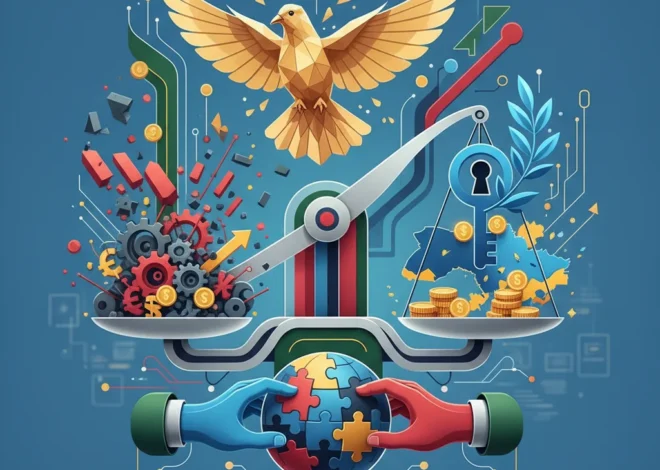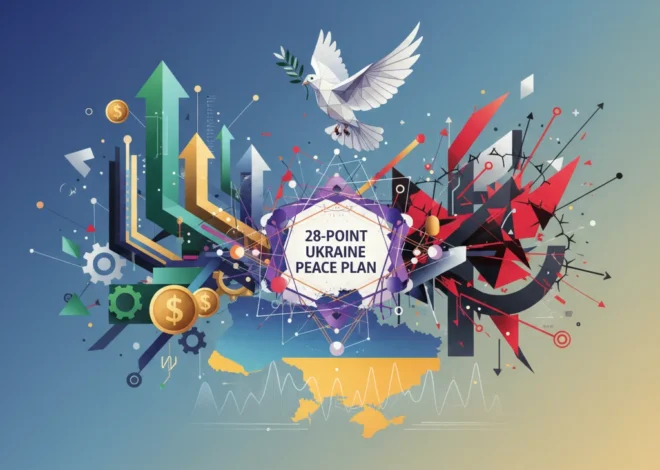
Beyond the Grid: What the FT Crossword Teaches Us About Modern Investing
The Unlikely Parallel Between a Puzzle and Your Portfolio
For many titans of industry, finance professionals, and discerning investors, the day doesn’t truly begin until they’ve grappled with the Financial Times crossword. It’s a ritual, a mental warm-up, a quiet battle of wits against the cryptic clues of the day’s setter. On the surface, it’s a simple pastime—a grid of black and white squares waiting to be filled. Yet, hidden within this daily puzzle lies a profound and surprisingly accurate metaphor for navigating the complex, often bewildering, world of modern finance and investing.
Solving a cryptic crossword, particularly one as notoriously challenging as the FT Crossword, requires more than just a broad vocabulary. It demands pattern recognition, lateral thinking, patience, and the ability to distinguish signal from noise. These are the very same cognitive skills that separate successful investors from the rest. The grid itself is a microcosm of the global economy: an intricate web of interconnected parts where a single correct (or incorrect) entry can have cascading effects across the entire system. Let’s peel back the layers of this analogy and explore the critical investment lessons embedded in this beloved puzzle.
The Macro View: The Grid as the Global Economy
Look at a blank crossword grid. It’s a map of interdependent systems. The “Across” clues represent one set of economic forces—perhaps monetary policy, industry trends, or consumer behavior. The “Down” clues represent another—geopolitical events, supply chain dynamics, or technological disruption. No single word exists in isolation. Each answer must coexist and interlock with others, sharing letters and logic.
This is a perfect illustration of systemic risk and economic interconnectedness. In the modern financial world, the performance of the US stock market can be influenced by manufacturing data from China, which in turn is affected by energy prices dictated by conflicts in the Middle East. A breakthrough in fintech in London can disrupt traditional banking models in New York. As the International Monetary Fund notes, the increasing integration of global financial markets means that shocks in one region can propagate globally with astonishing speed. The crossword teaches us this intuitively. If 14-Down seems to be “ECONOMICS” but the “O” doesn’t fit with 17-Across, you know one of them is wrong. You are forced to re-evaluate your assumptions based on how they fit into the larger, interconnected system.
Deciphering the Clues: A Masterclass in Financial Analysis
If the grid is the macro environment, the clues are the individual investment opportunities. The art of solving a cryptic clue is a direct parallel to performing rigorous fundamental analysis on a company or asset.
- The Surface Reading vs. The Hidden Logic: A cryptic clue has a misleading surface meaning. For example, “Hear banking concern” might cryptically clue the word “LOAN” (which sounds like “lone”). An inexperienced investor might react to the surface-level market noise—the “banking concern”—and panic. The skilled analyst, like the cryptic solver, looks deeper. They parse the “wordplay” to understand the underlying mechanics, just as an investor pores over balance sheets, income statements, and cash flow reports to determine a company’s true health, ignoring the daily market chatter.
- Anagrams and Market Disruption: Anagrams rearrange the letters of one word to form another (e.g., “angered” becomes “enraged”). This is a powerful metaphor for disruptive innovation, especially in financial technology. The core components (the letters) remain the same—capital, data, customers—but a disruptive force like blockchain technology can reconfigure them to create an entirely new model of value exchange, rendering the old one obsolete. The rise of DeFi (Decentralized Finance) is a perfect example of the financial world’s letters being rearranged into a new, challenging word.
- Hidden Words and Undervalued Assets: Some clues hide the answer within the phrase itself (e.g., “Part of the problem is pain” clues “SPAIN”). This is the crossword equivalent of value investing. It’s the search for hidden gems—companies or assets that the broader market has overlooked, their intrinsic value concealed within the “noise” of a larger, less appealing narrative. Finding these requires meticulous attention to detail and a contrarian mindset.
Decoding Bitcoin's Sideways Shuffle: Why Price Compression Could Signal a Major Breakout
From Cognitive Skills to Investment Strategy
The mental muscles flexed during a crossword session are directly transferable to building a robust investment strategy. The table below breaks down this powerful connection.
Here is a direct comparison of the skills honed by puzzle-solving and their application in the financial arena:
| Crossword Solver’s Skill | Investor’s Parallel | Real-World Financial Application |
|---|---|---|
| Pattern Recognition | Identifying Market Trends | Spotting emerging sector growth, recognizing chart patterns in technical analysis, or understanding cyclical economic behavior. |
| Lateral Thinking | Creative Financial Analysis | Connecting seemingly unrelated events (e.g., a climate report and its impact on insurance stocks) to find unique investment theses. |
| Patience & Persistence | Long-Term “Time in the Market” | Resisting the urge for panic-selling during downturns and sticking to a long-term strategy, understanding that complex problems (and wealth generation) take time. |
| Attention to Detail | Due Diligence | Scrutinizing the fine print in an annual report, understanding the nuances of a company’s debt structure, or catching red flags others might miss. |
| Switching Focus | Portfolio Diversification | Moving from one section of the puzzle to another when stuck is like rebalancing a portfolio or not concentrating all your capital and attention on a single asset. |
The Psychology of the Solve: Managing Bias and Emotion
Perhaps the most crucial lessons from the FT crossword are psychological. The process of solving is a controlled environment for confronting the same cognitive biases that plague investors in the wild.
One of the most common pitfalls is confirmation bias. In a crossword, this happens when you ink in an answer you’re sure is correct. You then try to force every intersecting word to fit that initial, flawed assumption, ignoring the contradictory evidence presented by the other clues. This is identical to an investor falling in love with a stock. They seek out information that confirms their belief in the company and dismiss negative reports, even when the market is sending clear signals to the contrary. A good puzzler, like a good investor, must be willing to kill their darlings—to erase a cherished answer when the evidence mounts against it. A study on behavioral finance shows this bias is a leading cause of poor investment returns.
Furthermore, the puzzle teaches the value of stepping away. When you’re staring at a stubborn clue, brute force rarely works. The answer often comes in a flash of insight after you’ve taken a break. This is a vital lesson for active traders and investors. Staring at market tickers all day can lead to emotional, reactive decisions. Stepping back allows for a calmer, more rational assessment, preventing you from making a costly move in the heat of the moment.
Building a Resilient Financial Mind
Engaging in activities like solving crosswords can genuinely enhance the cognitive abilities crucial for financial success. Research has consistently shown that mentally stimulating activities help maintain brain health and improve executive functions like problem-solving and working memory (source). These are not soft skills; they are the fundamental processing power required to analyze the deluge of data that defines modern economics and finance.
By treating the market like a grand, ever-evolving cryptic crossword, you shift your mindset from one of passive speculation to active, engaged problem-solving. You learn to appreciate nuance, to respect complexity, and to develop a flexible, resilient intellect.
Beyond the Boarding Pass: Ryanair's Digital Gambit and Its Ripple Effect on Finance and Investing
Conclusion: The Final Clue
The FT crossword is far more than a morning diversion. It is a daily workout for the investor’s mind, a simulated environment where the core principles of successful financial navigation are practiced and perfected. It teaches us that the world is an interconnected grid, that every opportunity requires deep analysis beyond its surface appearance, and that our own psychological biases are often the most difficult clues to solve.
So, the next time you pick up the paper and see that grid, don’t view it as a mere game. See it for what it is: a training ground. In learning to crack the code of the cryptic clue, you are simultaneously learning to decipher the complex, challenging, and ultimately rewarding puzzle of the global financial market.


